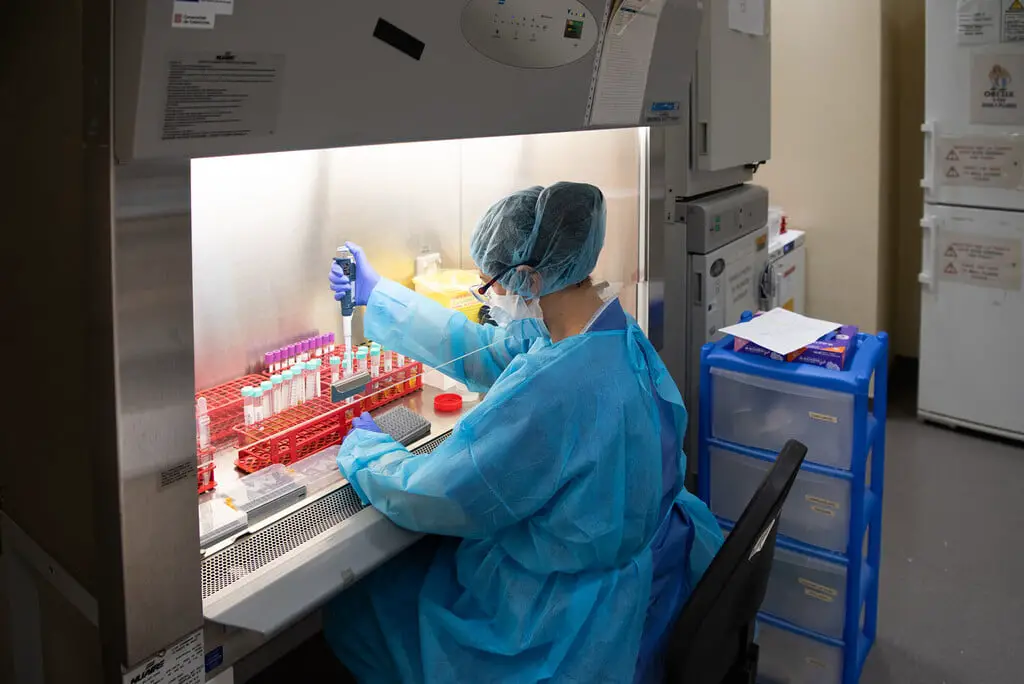mRNA technology changed the developing Coronavirus vaccine. Just two days; that’s how long it took Moderna’s teams to design their coronavirus vaccine, and since the figure was revealed in a New York Times report it has not ceased to amaze. No wonder: We are talking about one of the most important technological developments of the decade, a key step for what could be one of the great milestones in the history of science and it was done in only 48 hours. How did they do it?
Welcome to the world of mRNA technology
These vaccines are based on messenger RNA. The mRNA is a piece of ribonucleic acid that carries information about the amino acid sequence of a particular protein from the DNA, where all that information is stored, to the ribosome, the place in the cell where the different proteins are synthesized. To draw a parallel: the mRNA would be the ‘pendrive’ used by the cells to transfer the information from the computer (DNA) to the printer (ribosome).
As our ability to produce synthetic RNA improved, scientists wondered whether we could “switch” the cell with a pendrive made by us. That is if we could “infiltrate” a ribonucleic acid chain and trick the ribosomes into producing the proteins we wanted. This was first achieved in mice in the laboratories of the University of Wisconsin in 1990.
It opened the door to using our own body to make “antibodies to vaccinate against infection, enzymes to reverse rare diseases, or growth agents to repair damaged heart tissue. However, putting the idea into practice was much more difficult than it seemed. After all, we can’t go cell by cell in the body injecting the synthetic RNA to make whatever we want, and pouring large amounts of that RNA into the bloodstream could trigger a massive and very dangerous immune response.
In 2005, Katalin Karikó and Drew Weissman discovered a way to “mask” RNA from the immune system. Thus, the synthetic instructions could travel through the body and into the cells without producing immune reactions. Two of the most successful vaccines against coronavirus are working on this patent: Moderna’s and Pfizer‘s.
How to easily program a vaccine?
When Moderna emerged, researchers were just looking for a quick way to reprogram adult cells and turn them into stem cells. But they soon realized that they had a much more powerful tool at hand. The problem now is that they had too many possibilities. Suddenly, they had the power to program the molecular machinery of cells; however, there was everything to be done.
And that, in an industry such as biotechnology, which has a very long history, was a huge problem. It wouldn’t be the first time that a company began to develop a successful technology and went bankrupt before it could see it become a reality. So, when they got to work they did what every computer scientist would do in the face of a new programming language: a library.
That is, they created a set of “coded functional implementations” that would allow them to write and design small genomic programs (the synthetic mRNA) quickly and easily. This required knowing how ribosomes read and synthesize proteins; learning the “machine language” of mRNA, and finding a way to write the instructions we want and “compile” them into synthetic RNA.
They did it, and the best example is their coronavirus vaccine. On January 10, 2020, the first sequencing of the SARS-CoV-2 genome was made publicly available and the description of the spike protein was already there. Due to its particular characteristics, that protein would be the target of the vaccine: if they could get the cells to produce it, the immune system could identify it and generate immunity.
Moderna “alone” had to get to work. And, as I said in the introduction, it took two days to design the RNA instruction that would make the cells produce the coronavirus spike protein. The most difficult part remained, the one that has occupied them for the rest of the year: to check that this small “masked” mRNA program could be administered safely and effectively. And precisely because of this, it goes far beyond the coronavirus. If they succeed, they will be testing the power of a system that can change medicine as we know it.





